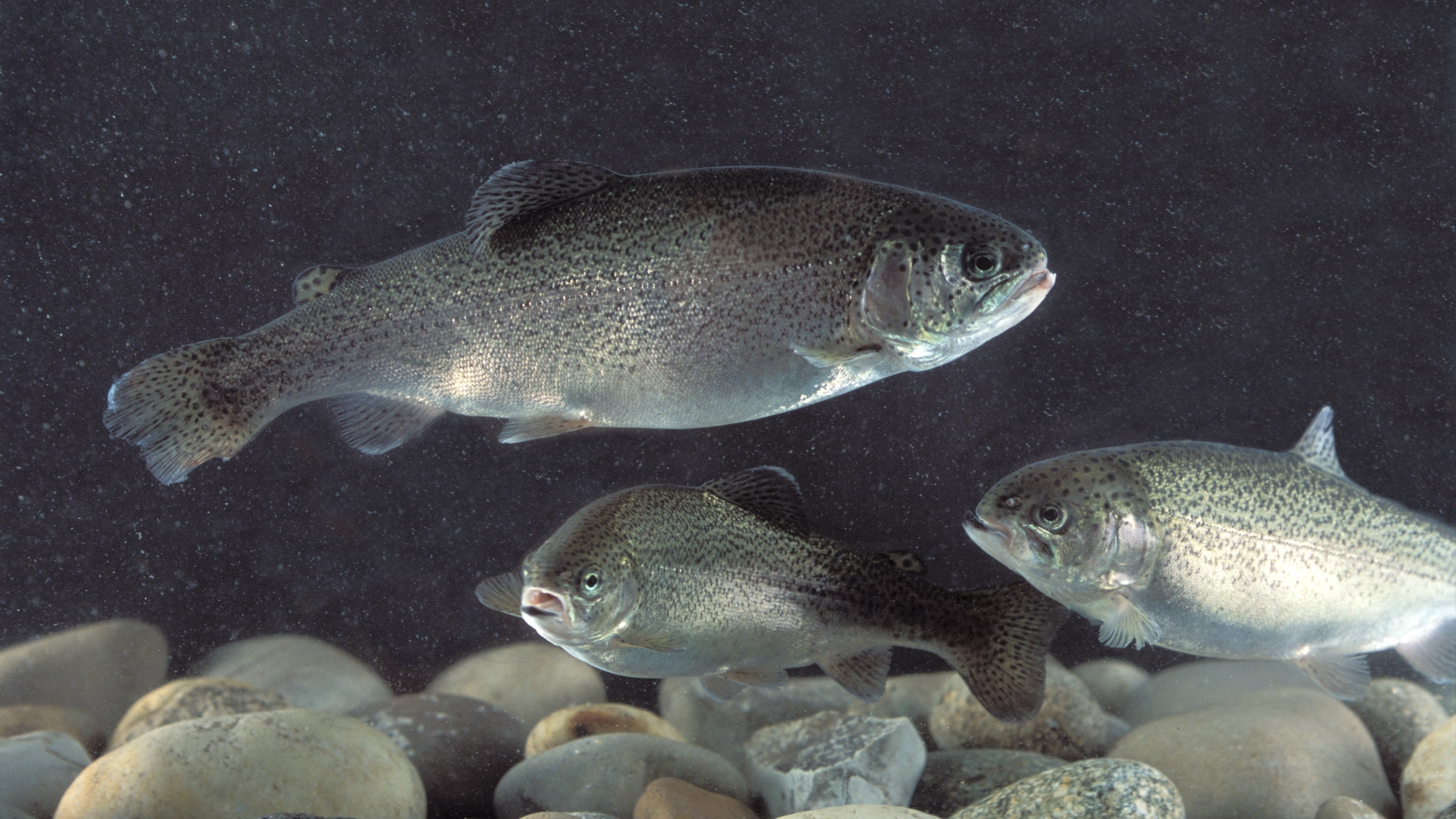Viral Hemorrhagic Septicemia Virus

Viral hemorrhagic septicemia virus (VHSV) is a highly contagious and often fatal viral disease of freshwater and saltwater fishes, including salmon, trout, yellow perch, sunfish, walleye, and northern pike, among others. VHSV is listed as a pathogen by the World Organisation for Animal Health.
APHIS follows World Organisation for Animal Health guidance for reporting VHSV detections in the United States.
VHSV has four major genotypes (I, II, III and IV) and nine subtypes (Ia-e and IVa-IVd). In the United States, subtypes IVa and IVb are most often detected. IVa is found in susceptible wild and farm-raised fish species off the Pacific Coast. IVb is detected in susceptible wild fish species from the Great Lakes region.
Most VHSV outbreaks occur in the spring when water temperatures are below 59 °F. VHSV deaths rarely occur at temperatures above 64 °F.
VHSV-infected fish may show one or more of the following symptoms:
- Hemorrhages on the body, eyes, gills, or the base of the fins
- Bulging eyes
- Swollen abdomens
- Darkened coloration
- Abnormal swimming behavior
In some cases, VHSV-infected fish won't show any signs of illness. They can still spread the virus and infect other fish.
VHSV usually spreads through the urine and reproductive fluids (ovarian fluids, sperm) of infected fish. Fish can be exposed by direct contact with infected fish or contaminated water.
Biosecurity Helps Prevent VHSV From Spreading
If you're a fish producer, here's what you can do:
- Quarantine incoming fish.
- Clean and disinfect equipment, vehicles, and footwear.
- VHSV is susceptible to several disinfectants, including bleach and iodine solutions.
- Drain and clean boats, nets, and equipment before moving between locations.
- Don't move fish, including baitfish, from one body of water to another.
Interstate Trade Restrictions
Some States require testing for VHSV for live fish entering from other States. To check for requirements, contact the appropriate State animal health official.
There is no treatment for VHSV.
Report Signs of Animal Disease
Producers or owners who suspect an animal disease should contact their veterinarian to evaluate the animal or herd. Find an accredited veterinarian.
Animal health professionals (veterinarians; diagnostic laboratories; public health, zoo, or wildlife personnel; and others) report diagnosed or suspected cases of nationally listed reportable animal diseases to APHIS District Offices and to the State animal health official as applicable under State reporting regulations.

